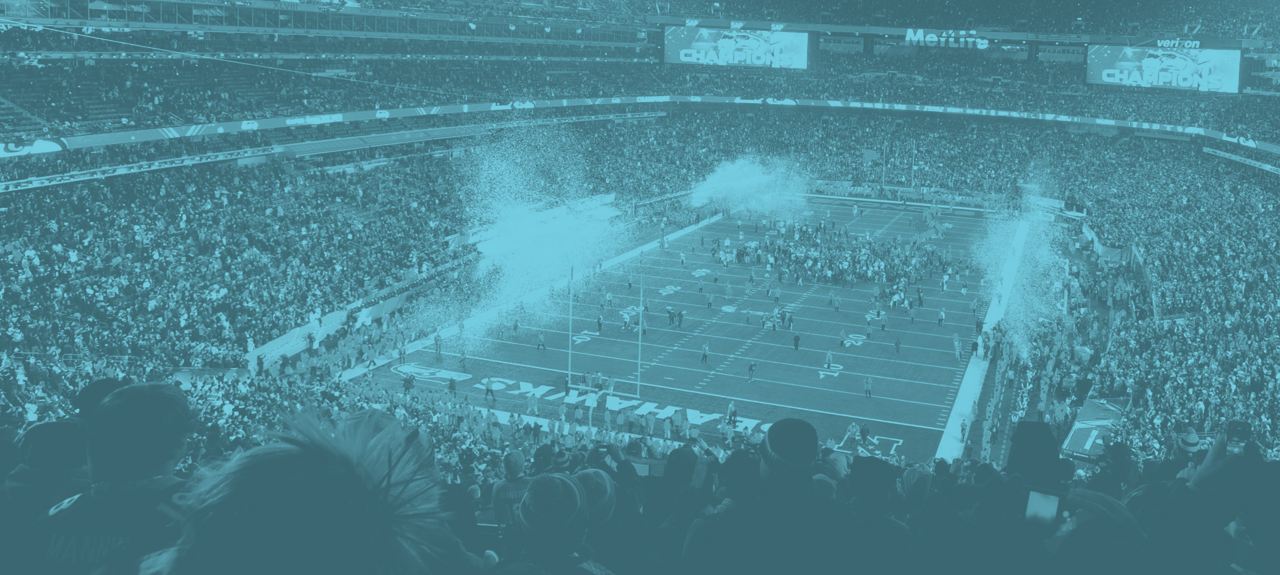We’re quickly approaching that wonderful time of year when friends and family gather ‘round the TV to celebrate football, food and, well, … ads. Although many of us at Switch are unabashed marketing nerds who pay attention to ads year-round, we are not blind to the Big Game’s bizarre relationship with advertising. As most marketers, and really the entire country, is aware, this is the one event of the year that garners just as much attention and talk for the advertisements as for the game itself.
While most of us are at home watching, there is a while other audience in the game city in person and a whole other layer of marketing that occurs on the ground that most viewers don’t see – a swarm of sponsorship activations on-site before and during the Big Game. From brand booths to celebrity appearances and interactive games, companies pay top dollar to acquire prime real estate at the event in hopes of reaching fans in attendance through an experience. If brands are looking for a way to participate beyond or instead of a television buy, there are definite advantages to on-site sponsorships: it’s drastically cheaper than airtime and the brand-to-consumer exchange feels more tangible.
Through our years working on experiences around the Big Game we’ve learned invaluable lessons. While brands that are taking part in this year’s game have already dotted the I’s and crossed the T’s, those of you evaluating 2016 or 2017 plans should take into account these potential challenges and opportunity.
The Investment May Actually Be More Than It Seems
The costs involved in an activation can be astronomical. Acquiring the sponsorship can eat up a large chunk of your marketing budget – but that doesn’t include the actual implementation costs. The biggest sponsors get first dibs on key hotel space, so depending on the host city location, your team might be left with a hotel that is one or two hours away from the site. Then you have to factor in costs for driving and parking. Be sure to account for all of this when planning
Plan on Planning
The corporate side of the Big Game runs like a well-oiled machine, but that doesn’t hinder the chaos that happens with any large event. To participate in the sponsor activation, you’ll have to think pretty far ahead; locking in your deal needs to happen one-and-a-half to two years out. The NFL has a “safe zone” that can span several square miles beyond the stadium. If you don’t secure a sponsorship, your brand will be locked out of the space – and the fans – around the immediate game zone. And once you’re “in,” you need to find a way to stand out. These brands are pros that have invested hundreds of thousands of dollars on their displays. To find the best way to make impact, give your brand ample time to research, concept and produce an activation that leaves a lasting impression. Then figure out your logistics: Are you giving product away? How do you plan to transport it? How do you acquire necessary permits? Knowing this information ahead of time will save you headaches later.
Be Mindful of Measurement
There are few events that earn as much national attention as the Big Game. But just because everyone is tuned in, does it make a difference for your brand to be there? Or does the vast crowd make it feel worthwhile? To gauge the success of your sponsorship, your brand has to first define what success looks like and then develop a methodology to measure it. You may be after data collection, social media traction or number of interactions. Based on projected impressions, your brand should have goals defined to identify the return.
Understand the Full Commitment
Festivities kick off more than a week before the big coin toss. If your brand is on board, expect brand ambassadors to be working overtime. There is an onsite 16-hour brand daily commitment – which can be exhausting for your team and expensive for your brand if you don’t create an appropriate staffing plan.
Activations at the Big Game can be major game changers (pun intended) for brands when they’re implemented and managed effectively. It’s why certain brands continue to invest in the opportunity year over year. But just because an activation or medium works for Bud Light doesn’t mean it will deliver the same results for everyone. Understanding the potential hurtles and benefits will help you determine if it is the right place for your marketing dollars or if an independent experiential marketing plan might deliver more attention to your brand.
Get in touch with Terry at TerryH@theswitch.us.














